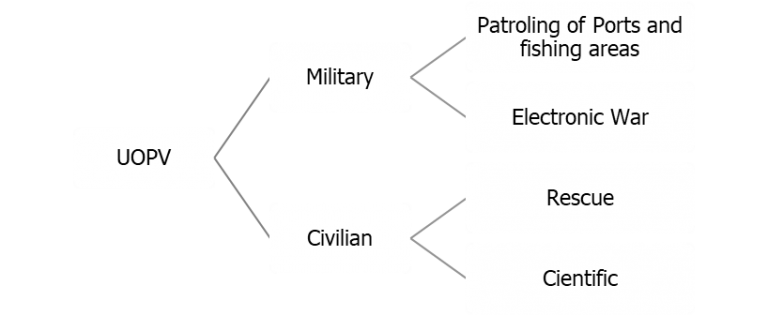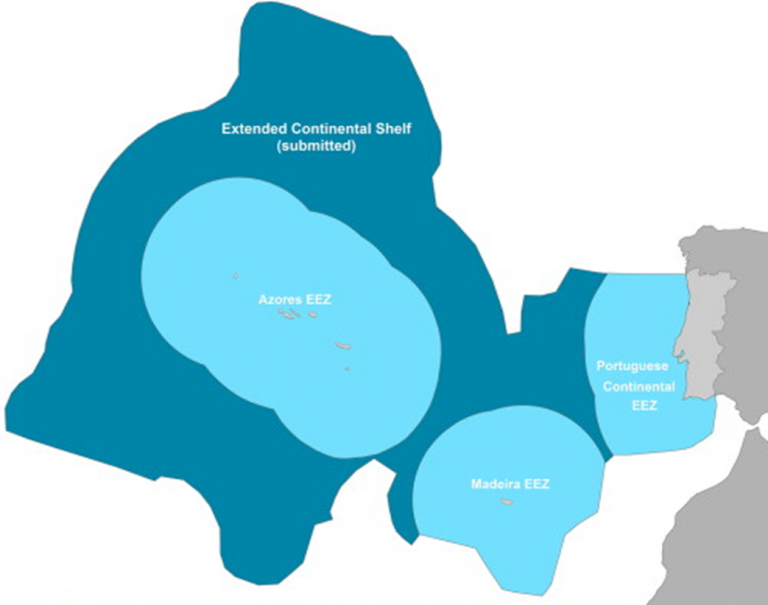UOPV – A R&D challenging project for marine unmanned vessels
TecnoVeritas UOPV project (NATO Snorkeler Class of MUS), was presented to NATO headquarters in Belgium – Brussels last December, at the MUS – Marine Unmanned Systems Conference, receiving a great deal of attention from all navies present, by its payload, persistency and environmental friendliness.
TecnoVeritas has been creating value through knowledge since its beginning, and have made a huge step in what concerns the technology required to be deployed onboard unmanned commercial vessels, through the development of the actual UOPV (Unmanned Oceanic Patrol Vessel). This project became a dual-purpose project, as the development of the remote and autonomous operation challenges of technology were developed in parallel. Technology for oceanography or for patrolling vast areas of ocean, or even for the future unmanned commercial vessels was developed.
As the old sailors say, “Lobsters change their shell not because they like but because they feel too tight and uncomfortable inside of their actual one!”
Making one such project pushed TecnoVeritas itself to be involved with the newest shipping demands, therefore looking for technical and scientific solutions related with multi-processing of data, sensors fusion, communications, data management and transmission, artificial intelligence, COLREGS (collision avoidance) and much more.
With the acquired and novel knowledge, TecnoVeritas was “forced” to enter into the ultimate marine engineering knowledge areas, making it a possible partner and role player for most of the future shipping and surveillance requirements to come.
As the UOPV hull is to withstand very harsh conditions in operation, it is made of particularly strong fibres. Therefore TecnoVeritas has formed a consortium with NAUTIBER Shipyards at Algarve Vila Real de Santo António to build the hulls.
NAUTIBER has a huge track record of fibre construction, from luxury yachts to tuna fishing boats and patrol vessels. NAUTIBER will also benefit from the project, as they will be using novel construction technologies, like infusion and conformable moulds.
Focussing on maritime safety and being this a contemporary discussion topic, this new project – UOPV – an unmanned patrol vessel, wave propelled performing equally well on all headings including against wind and waves. It has zero emissions and can roam the oceans for very long periods, transmitting data via satellite to shore.
The vessel has different purposes, as can be seen in the following scheme:

The UOPV aims to become the most affordable way of patrolling vast areas of sea, in a consistent way, while spending the minimum of human and monetary resources without environmental impact. The UOPV was designed to ensure the deployment of patrolling capability at sea and therefore imposing the Portuguese presence and sovereignty in its waters in an area of 3,877,408 km2 of the North Atlantic.
More than 300 vessels a day are sailing through the Portuguese waters, being one area where the most important commercial routes in the world are laying.
In its waters, the country needs to address actions such as Salvage, Fisheries law enforcement, Drugs transportation, Terrorism, Immigration control, Ports blockage, etc.
Due to its exceptional payload, and depending on the missions required, the UOPV may be equipped with different sensors and or armament if required.
The vessel was designed to stand the heavy weather of the North Atlantic seas, capable of developing a patrolling action in all conditions, having an outstanding stealth behaviour on its surface mode.

UOPV had its design-oriented to operate during long periods without using fuels, therefore it is adequate for patrolling missions of vast ocean areas without fuel costs and restrictions.
UOPV is between 6m and 8 m long and 2m to 2.5m of breath, with a draft between 1m and 2m.
Endurance: >6 months at sea.
The UOPV is equipped with integrated hybrid hydrogen energy and propulsion system, using the waves energy for patrolling operations, and in case of need, it can use accumulated energy on board for auxiliaries as well as for attack and defence purposes including sprinting. The UPOV has two operation modes, the patrolling with a speed up to 6 knots and the sprint mode above 2 knots. Its unique hybrid hydrogen system allows an exceptional endurance at sea. Despite its minimal visual silhouette, UOPV has an enhanced stealth mode.
The UOPV is a project supported by Fundo Azul (a programme from the Portuguese Government – DGPM).
The UOPV is also an outstanding platform for civilian research (marine biology as well as oceanography), due to its space, power and payload availabilities, as well as to its silent operation. For example, the searching sensors (for rescue and identification missions), can detect a man in the water at 800m or a vessel at 2000m, can recognise a man in the water at 200m or a vessel at 550m or identify a man in the water at 100m or a vessel at 300m.
UOPV is wave propelled and performs equally well on all headings including against winds and waves. It has zero emissions and can roam the oceans for very long periods, transmitting data via satellite to shore, or via other data transmissions technologies. Its extreme endurance coupled with a unique solution to reach considerable speed, its payload, and dissuasive power for unmanned surface vessels (USVs) offers great new potential to all engaged in oceanic monitoring and surveillance.
Hull motions in waves are converted directly, silently, into propulsive thrust. This gives speeds of up to 6 knots of the vessel. UOPV’s wave propulsion technology is completely scalable. Its internal volume is more than 3m3 allowing an outstanding payload in equipment like sensors or other. The deck space is covered by last generation marine PV panels converting sunlight into power. UOPV energy concept, its improvements regarding the market existing offers, allow UOPV to perform new operations not previously considered as being possible as the ocean patrolling. The UOPV is also easy to deploy and recover either from a support boat, a slipway or a marina like a boat.
Station keeping: UOPV will keep the station on a 35m radius. This allows it to act as an untethered buoy, offering great economies.
Waypoint: can be set or varied at any time from shore. This also means that UOPV knows the “way back home” to the rendezvous point or close to a harbour to be picked up. In this mode, an area of 500 square miles, can be properly patrolled in approximately one week.
Remote Operation: UOPV can be navigated from a remote location, on board of a vessel or from shore, using satellite communication.
Autonomous Operation: UOPV operated autonomously, i.e. it can make “decisions” based on an identification of context and artificial intelligence.
The UOPV project has been a way to pave the knowledge and challenges of future shipping, allowing the development of technology for the unmanned commercial vessels. The project, allowed the company to learn about data collection, processing and interconnectivity, allowing the systems onboard to become more and more independent from humans through the use of algorithms. The technology developed and underdevelopment has a potential to increase the environmental and energy performance of commercial vessels, without neglecting the required ship safety making the commercial ships more cost-effective, although there is a long way to go through in terms of safety, in particular on what is concerning the required statutory requirements of the systems, issued by the recognised bodies or classification societies.




